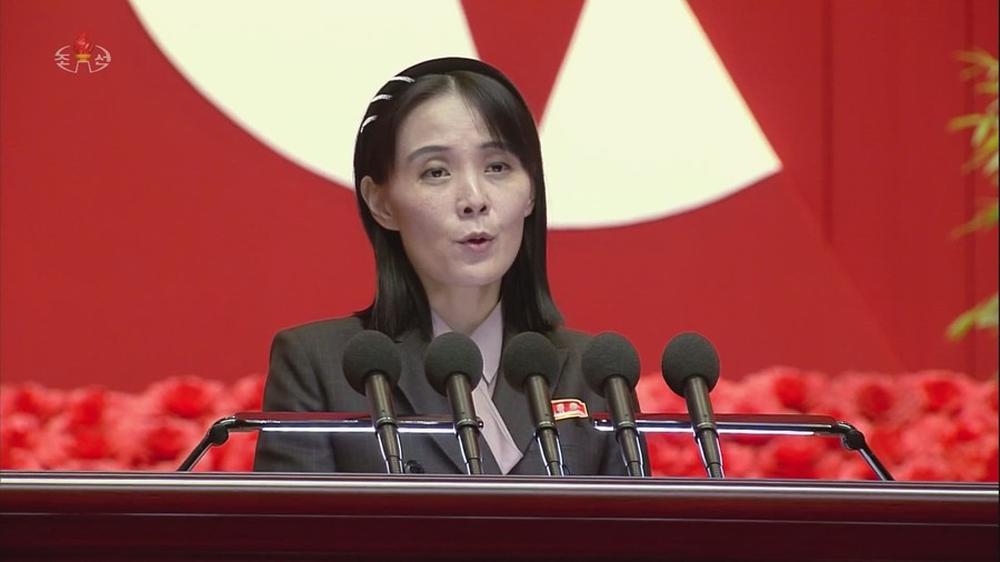- #Inter-Korean Relations
- #North Korea
- #Sanctions & Human Rights
- #US-ROK Alliance

► In his recent National Liberation Day speech, President Yoon Suk Yeol proposed implementing an “audacious initiative that...will significantly improve North Korea’s economy and its people’s livelihoods in stages if the North ceases the development of its nuclear program and embarks on a genuine and substantive process for denuclearization.”
► Due to its “conditional and phased” nature, there are various views on the initiative at home and abroad. It is time to take a closer look at the intent and features of the audacious initiative.
► With the prerequisite that strong deterrence and security are secured, if the intention is to reduce tension and crisis on the Korean peninsula while peacefully resolving the denuclearization issue, engagement and negotiation should work as effective policy assets. Moreover, it is difficult to deny that the audacious initiative is a better alternative that is both practical and accommodates for actionable and realistic measures.
In his recent National Liberation Day speech, President Yoon Suk Yeol proposed implementing an “audacious initiative that...will significantly improve North Korea’s economy and its people’s livelihoods in stages if the North ceases the development of its nuclear program and embarks on a genuine and substantive process for denuclearization.” Illustrating a wide-ranging North Korea support package, including implementing a large-scale food aid program, projects to modernize ports and airports, and financial support initiatives, the speech further clarified the “audacious plan” first mentioned in the president’s inaugural address. However, in an “unprecedented” and swift rejection of the plan, North Korea’s Kim Yo Jong stated that it is impossible to barter “economic cooperation for our national polity, nukes.” Due to its “conditional and phased” nature, there are various views on the initiative at home and abroad. It is time to take a closer look at the intent and features of the audacious initiative.
First, there is the view that this initiative is similar to the previous formula of “denuclearization first, economic support later” that North Korea has rejected time and time again. North Korea’s Kim Yo Jong also dismissed the audacious initiative as nothing but a copy of “Vision 3,000: Denuclearization and Openness.” However, a government official has stated that the audacious initiative can be put into action at the start of negotiations, making it clear that the initiative is not simply a response to North Korea’s initial denuclearization measures. It is an initiative that goes beyond the current trend of denuclearization first and was presented as a way to kickstart negotiations. It reflects the South Korean government’s intention to facilitate the resumption of denuclearization talks, and if North Korea has genuine intentions to engage with South Korea and the international community, it is a proposal that cannot be rejected lightly.
Second, in contrast, there are also concerns that North Korea could exploit South Korea’s intention to provide assistance to the North contained in the audacious initiative. These are valid concerns considering the precedent of buying the same horse twice once North Korea receives economic aid or diplomatic concessions or the North using salami tactics to disrupt negotiations. Moreover, some of the North Korea support projects proposed in the audacious initiative require adjustments or modifications to the international sanctions currently in place. The U.S.-China and U.S.-Russia conflicts are intensifying. It is difficult to not expect that UN sanctions, which were partially lifted during the denuclearization negotiations, will be reinstated in response to North Korea breaking its promises.
However, it is necessary to first carefully consider that the nature of the audacious initiative is to bring North Korea to the negotiating table. There is no reason to be overly pessimistic about whether North Korea will negotiate denuclearization with authenticity. Once negotiations begin, methods for verifying authenticity, such as the “action for action” principle, will be put in place. The verification methods and procedures can be prepared in close cooperation with the United States, while ensuring that North Korea fulfills its promises in a way that is difficult to undo. If North Korea violates the agreement, although it may prove difficult to restore some of the lifted UN sanctions to their original state, it is possible to reinstate many of the sanctions against North Korea through U.S. sanctions alone and through cooperation with international partners who share democratic values. A roadmap that presents an end goal of complete and verifiable denuclearization and establishes specific steps for implementation and verification has yet to be proposed. By creating a concrete roadmap, measures can be carefully devised to reduce collateral damage and the negative impact of risk factors that may occur during the engagement and negotiation process.
Third, there are concerns about conflict with the United States over North Korea cooperation. Those with this view are worried that North Korea could put on a deceptive show of diplomacy by using an inter-Korean or U.S.-North Korea summit as bait to exploit South Korea’s willingness to engage, and that cracks could form in the Korea-U.S. alliance, South-South conflict could be incited, and deterrence against North Korea could be weakened. However, the Biden administration has been avoiding an “all or nothing” top-down big deal approach. The administration is not caught up with superficial displays of negotiation and has repeatedly pledged to pursue a practical, calibrated, and gradual approach through bottom-up diplomacy in close cooperation with allies that pursues the ultimate goal of complete denuclearization but is prepared to offer relief for particular steps. In this regard, the audacious initiative and the Biden administration’s approach to North Korea are in fact consistent and complement each other well. The new South Korean administration has been committed to transforming the Korea-U.S. alliance into a value-based alliance and strengthening bilateral cooperation. Even if disagreements arise during negotiations with North Korea, they can be resolved through close cooperation and joint deliberation.
The risky occurrence of a security vacuum is also an unfounded concern. The audacious initiative itself necessitates North Korea’s sincere desire to denuclearize. In addition, the initiative does not include South Korea’s defense readiness as a target of negotiation. The improvement of self-reliant deterrence in response to North Korea’s nuclear and missile threats is being pursued as a national policy task. The government is pursuing various diplomatic efforts to strengthen the defense commitment and extended deterrence provided by the United States. The recent expansion of the joint South Korea-U.S. military exercise Ulchi Freedom Shield (UFS) and the Extended Deterrence Strategy and Consultation Group (EDSCG), which the leaders of both countries agreed to revive this September at this past ROK-U.S. Summit, are clear examples of the restoration of the Korea-U.S. alliance’s deterrence against North Korea. In addition, the close interstate cooperation between allies is strengthened. For instance, at a meeting of the United States, Japanese, and Korean national security advisors, which was held for two days starting August 31, preparing for North Korea’s seventh nuclear test was a key item on the agenda. It is unlikely that the proposal to initiate denuclearization negotiations will lead to a security vacuum.
Fourth, some have pointed out that the audacious initiative is lacking in terms of support for improving North Korea’s human rights situations and proposing a vision for reunification. However, the plan includes a large-scale food aid program and projects to improve healthcare infrastructure, which are expected to provide a critical opportunity to dramatically improve the human security and livelihoods of the North Korean people. These are projects that establish a strong foundation for improving the human rights of North Koreans. Moreover, along with humanitarian aid projects, projects to improve North Korea’s infrastructure and financial system can reduce the economic and social gap between the two Koreas while increasing inter-Korean exchanges and cooperation, laying the groundwork for peaceful South-North integration. In other words, the audacious initiative is a proposal that lays the long-term groundwork for and substantially supports the likelihood of developing a blueprint for the peaceful reunification of the Korean peninsula.
Based on North Korea’s past behavior, there appears to be clear limitations to the effectiveness of addressing the North Korean nuclear issue through diplomatic negotiations and economic engagement. With the prerequisite that strong deterrence and security are secured, if the intention is to reduce tension and crisis on the Korean peninsula while peacefully resolving the denuclearization issue, engagement and negotiation should work as effective policy assets. Moreover, it is difficult to deny that the audacious initiative is a better alternative that is both practical and accommodates for actionable and realistic measures. An invitation to the negotiation table has been sent. Now it’s up to North Korea. Hopefully, North Korea will make a wise decision.♣
Jin-Ha Kim is currently senior research fellow at the Korea Institute of National Unification (KINU); and adjunct professor at Hallyim University of Graduate Studies. His research interests lie in Comparative Authoritarianism, East Asian Security, Nuclear Strategy and Proliferation of North Korea. Dr. Kim received his Ph.D. in Political Science at the University of Chicago in 2009.
